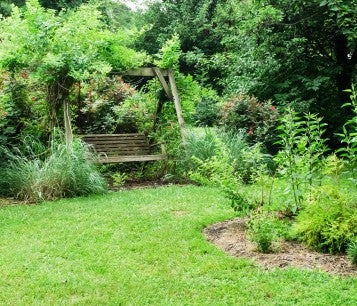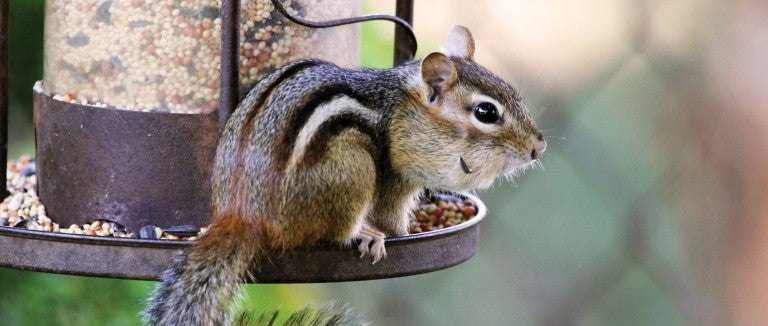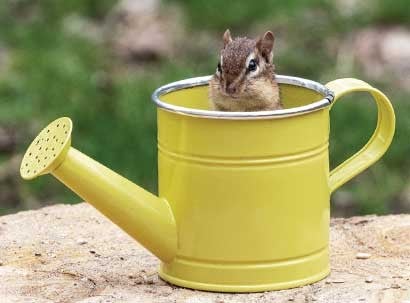As the world stopped turning and the fires started burning this summer, there was a hole in my heart that only a chipmunk could fill. Shy at first, the distant object of my affection warmed to my presence, until one day we even had breakfast on the patio together: a coffee for me and a snail for Mr. Chips, who left the shell behind as a parting gift.
After another chipmunk took up residence in the front garden, I saw them everywhere: devouring some good grub (or grubs) in stumps, exploring pond rocks and leaping to pluck berries straight from vines. Was it my imagination, or was it raining chipmunks? A scan of media reports confirmed the latter, proclaiming a “banner year” in much of the East due to bumper crops of acorns over the past two seasons.
While the chipmunks were always underfoot, something was missing overhead. Where were all the butterflies? A cold, wet spring had most likely drowned some caterpillars and made others more vulnerable to hungry birds and parasites, says Ohio Lepidopterists vice president Jerry Wiedmann. But butterfly numbers are always cyclic. “They’ll have a real big year, just like your chipmunks are having a big year, and then everything that eats them has a good year. So the next year, the butterflies are really down because of the predation.”
Our perception of population numbers and density impacts the way we feel about these animals and how we treat them.
John Griffin, The HSUS
A humane backyard is a natural habitat offering wildlife plenty of food, water and cover, plus a safe place to live free from pesticides, chemicals, free-roaming pets, inhumane practices and other threats. And it's so easy to build!

Many factors drive fluctuating wildlife populations. Some are distinctly manmade, as when mosquito spraying in Fargo, North Dakota, killed migrating monarchs in August. But others are part of the natural cycle. Young bears disperse more widely when food is scarce, but that doesn’t mean they’ve multiplied. Rabbits can reproduce more when warm winters encourage lush plants, but they won’t do so indefinitely.
Animals respond to temporary conditions, but lack of knowledge about their behaviors—and about our own role in shaping habitat—can lead to trapping, poisoning and other knee-jerk responses. Phrases like “too many rabbits” and “deer overpopulation” further trigger our confirmation bias. “Our perception of population numbers and density impacts the way we feel about these animals and how we treat them,” says HSUS urban wildlife director John Griffin. “For some people, it might take the form of ‘Oh, we planted one plant in our front yard, and the deer ate it, so now we’re overrun with deer.’ ”
Want more content like this?
This was written and produced by the team behind All Animals, our award-winning magazine. Each issue is packed with inspiring stories about how we are changing the world for animals together.
Learn MoreSubscribe

